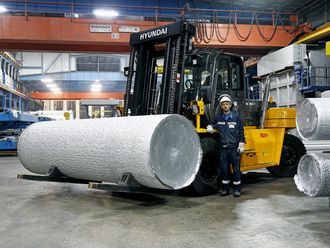When advertisers talk about below-the-line advertising, which line are they talking about? While we are all looking at the bottom-line of our businesses more closely, I felt it was a good time to examine which lines actually will help to enhance the profitability figures for most businesses.
When we see a brand on a hoarding, we know that it must be a big label, and if we have not heard of it before, we probably feel the need to upgrade our knowledge on international brands and travel more. Due to this perception, brands are still striving to buy up the big hoardings on Shaikh Zayed Road.
The earlier the interchange, the better. Feeling that being there validates their claim to a brand’s fame.
But is that a reality? How much attention do these hoardings actually command, with most of us being on our smartphones if we are passengers and our eyes on the road if we are driving? This brings us to the fact that reaching your clients’ eyeballs is most essential through their mobile phones.
The term below-the-line advertising has been digitalised and no more are advertisers cutting down trees by printing mass distribution leaflets — except for the massage parlour cards on our cars each time we go for a meeting. The go-to methods are mobile apps, Digital offers backed by referenceable reviews and, of course, product demo videos. Nothing beats convincing as much as a video that shows the usability and beneficial results of a product or service. Of course, for everything you can search out a review video with all the possible aspects of the product demonstrated and covered.
I recently visited a conference where a number of speakers were invited over a weekend. They were invariably giving us a sampling of their personalities and selling courses that we needed to buy. This captive audience actually bought the courses, which were pretty highly priced but were depicted as massively discounted.
And in the frenzy of not to be left behind, the “emotional spur” sales were pretty high. It is these now-or-never offers that had worked their magic over many unaware mortals.
So how do the digitalised below-the-line methods enhance our marketing? They are specially targeted towards individual customers, not to just window shoppers. They actually engage with the client through demos receiving actual feedback.
You can actually know how much time your potential audience spent on your webpage reading the information and contemplating the product. Now with artificial and emotional intelligence being everywhere, the targeting is easy with the bots actually knowing the character, likes and dislikes of the potential customers.
I recently watched a film in which a lady lost her husband in a car accident and was asked to purchase an application that would chat with her as if her husband was chatting with her. It gathered all the information from her husband’s social media and emails to actually be able to be “him”.
It was quite accurate in his kind of responses and, to take things further, she was asked if she wanted to go to the next level and if she would share all the pictures and videos of their life. And that they would make a human-like robot and send to her. which she could activate with some electrolytes and actually emulate being her husband. Wow — what a possibility for broken hearts … This is too below-the-line than we could be comfortable with, but then depression is something that can push people to extremes. And this beats all the side effects of prescriptions.
Though we all feel we have reached the pinnacle when our brands light up the hoardings all over town, it is better to have all those products and their benefits on a quite different sort of personal hoarding — the digital screens that we all own.
— Sandy Nathan is the Director of BDB Advertising and the initiator of The Label Sticks, which showcases brand stories and personalities.












